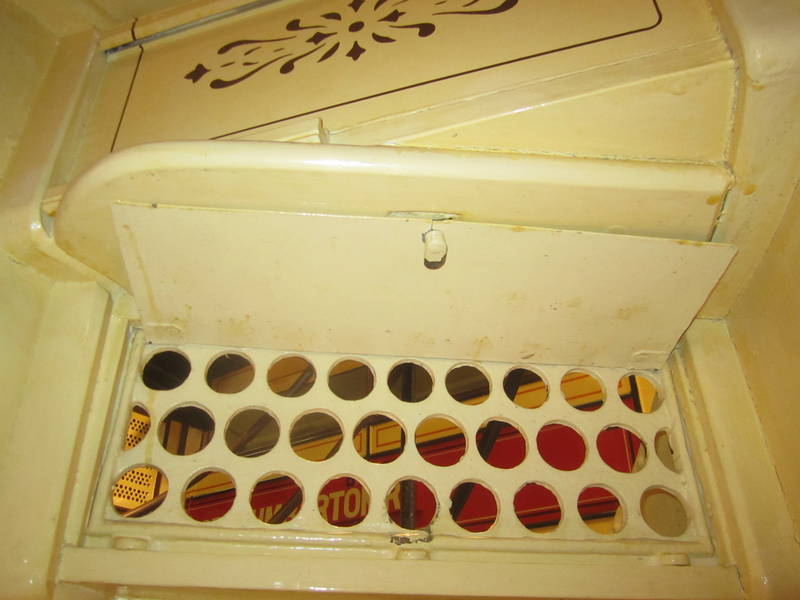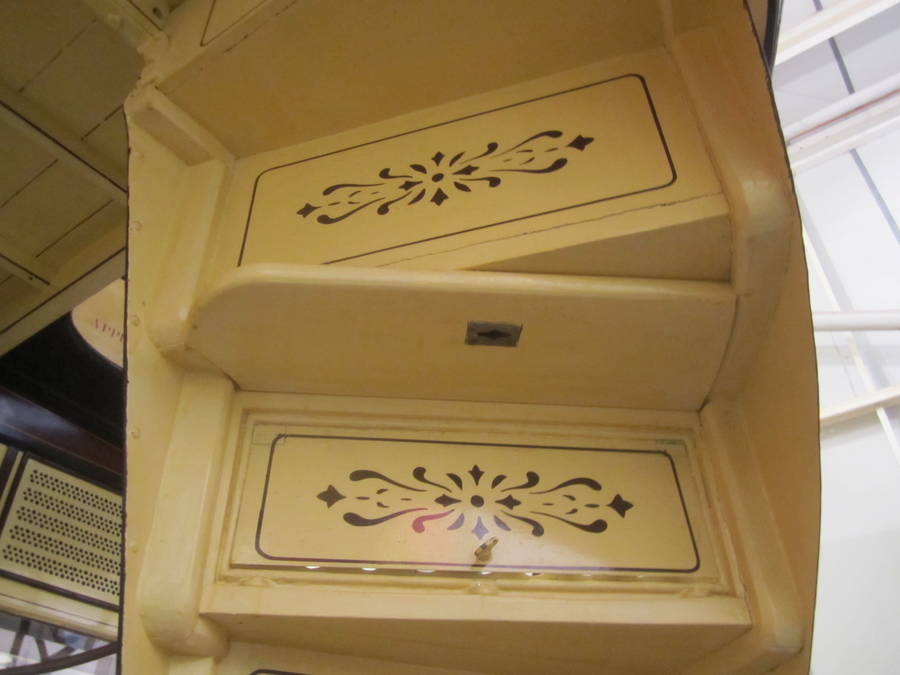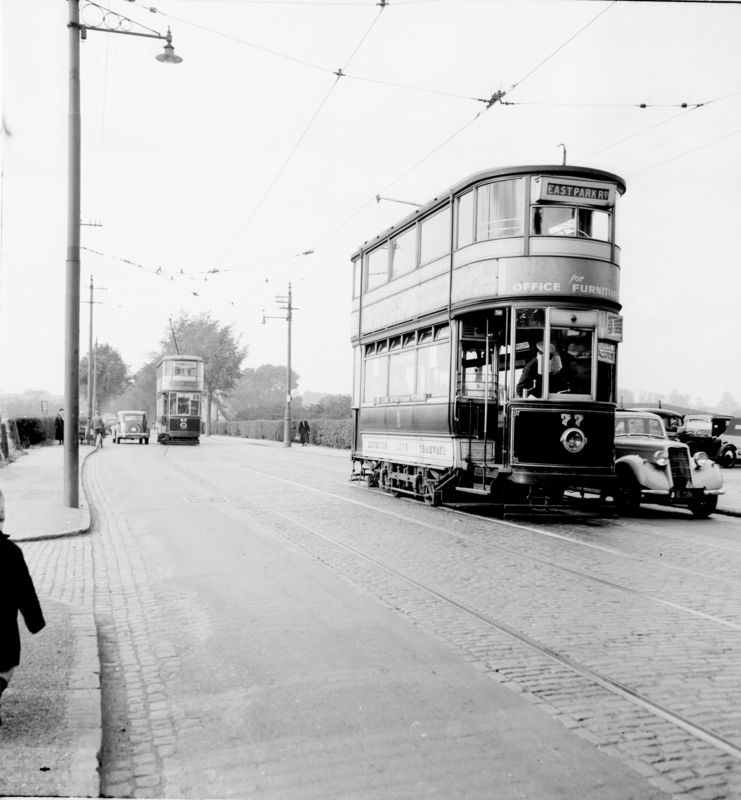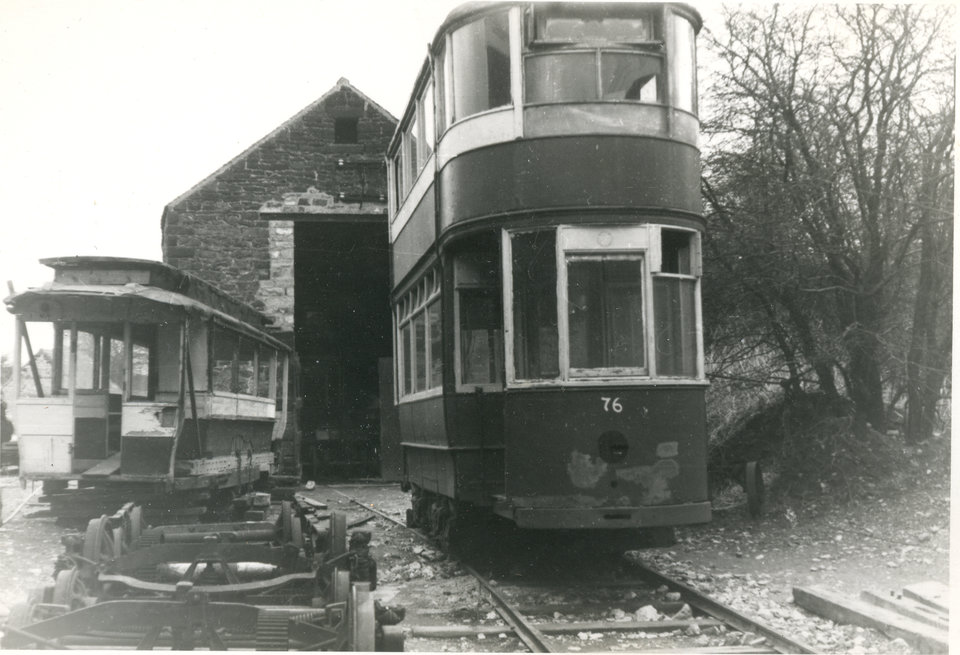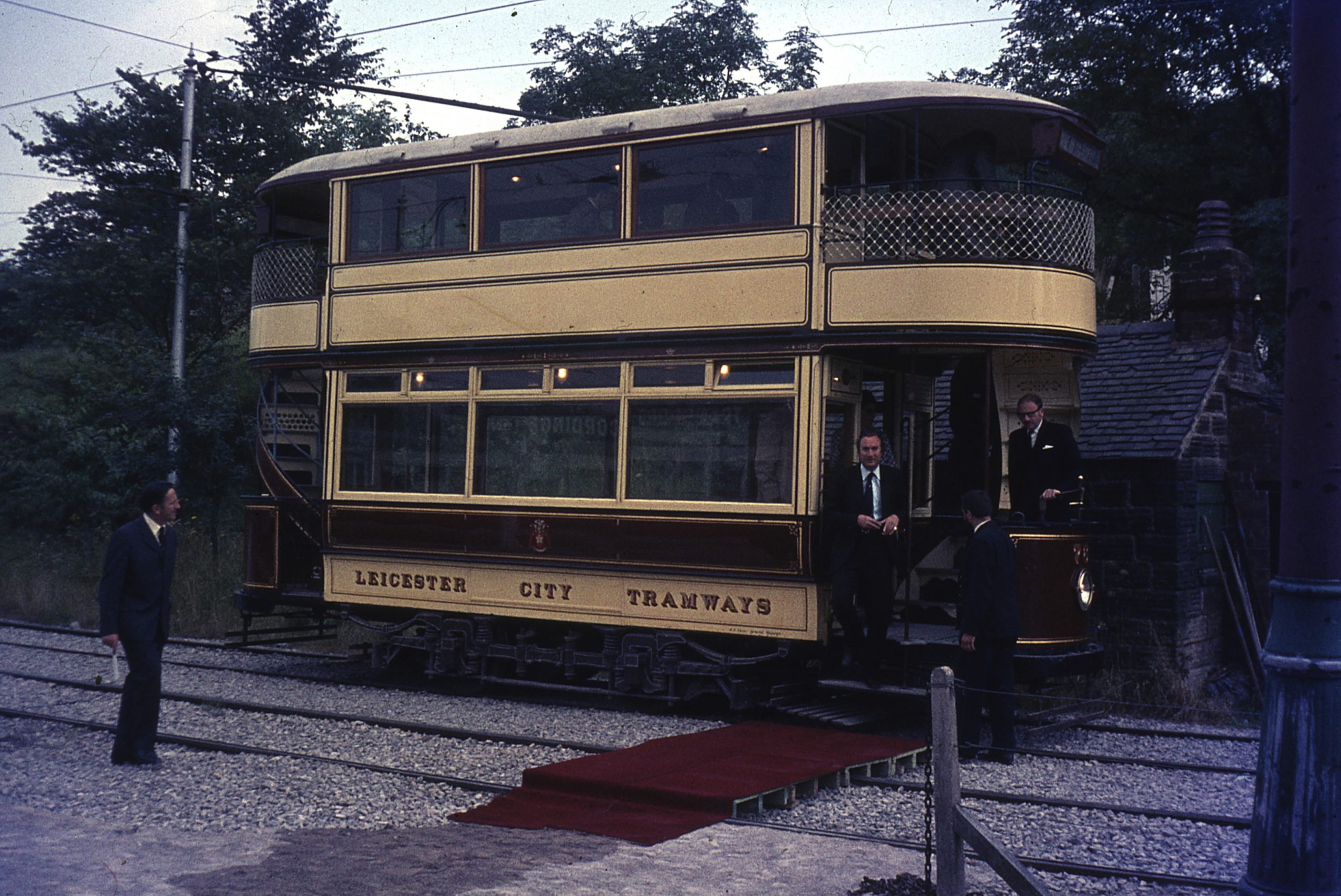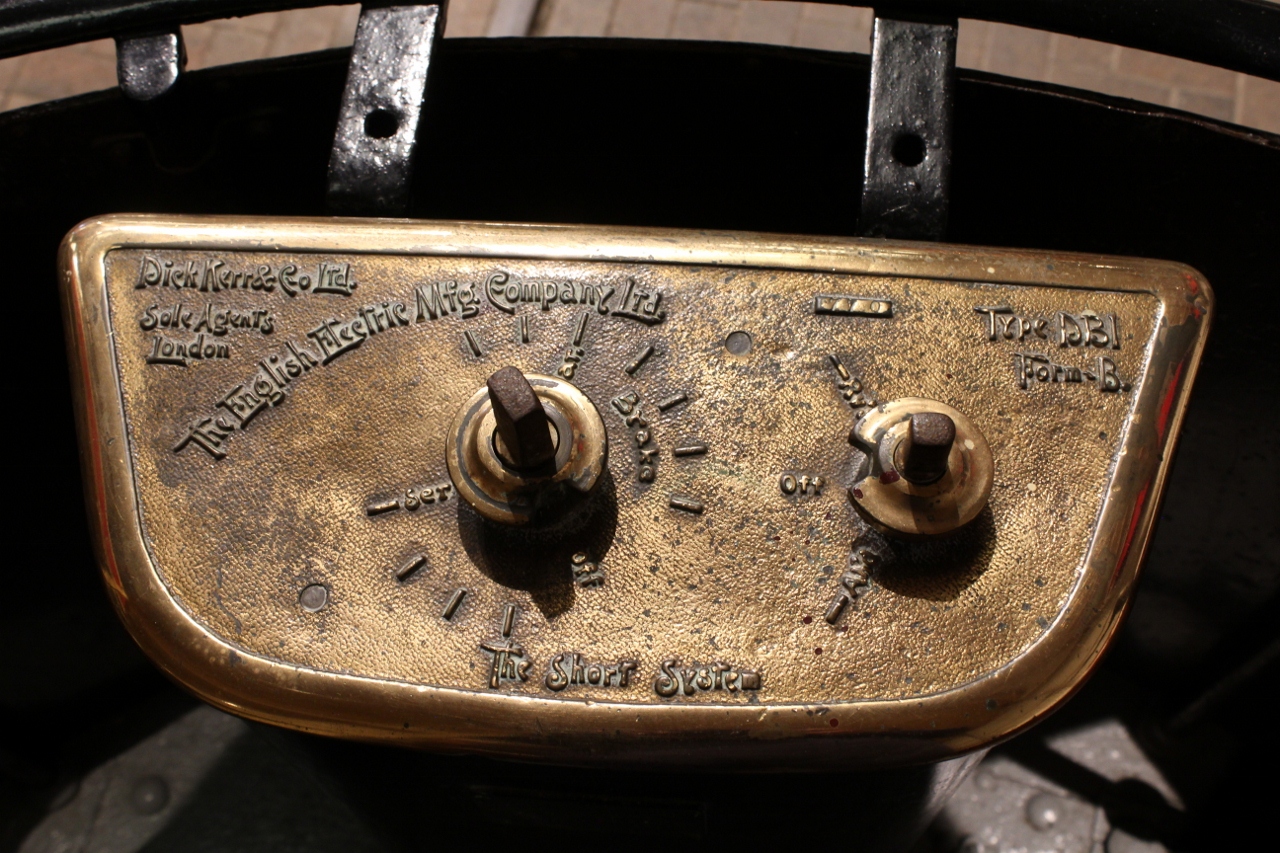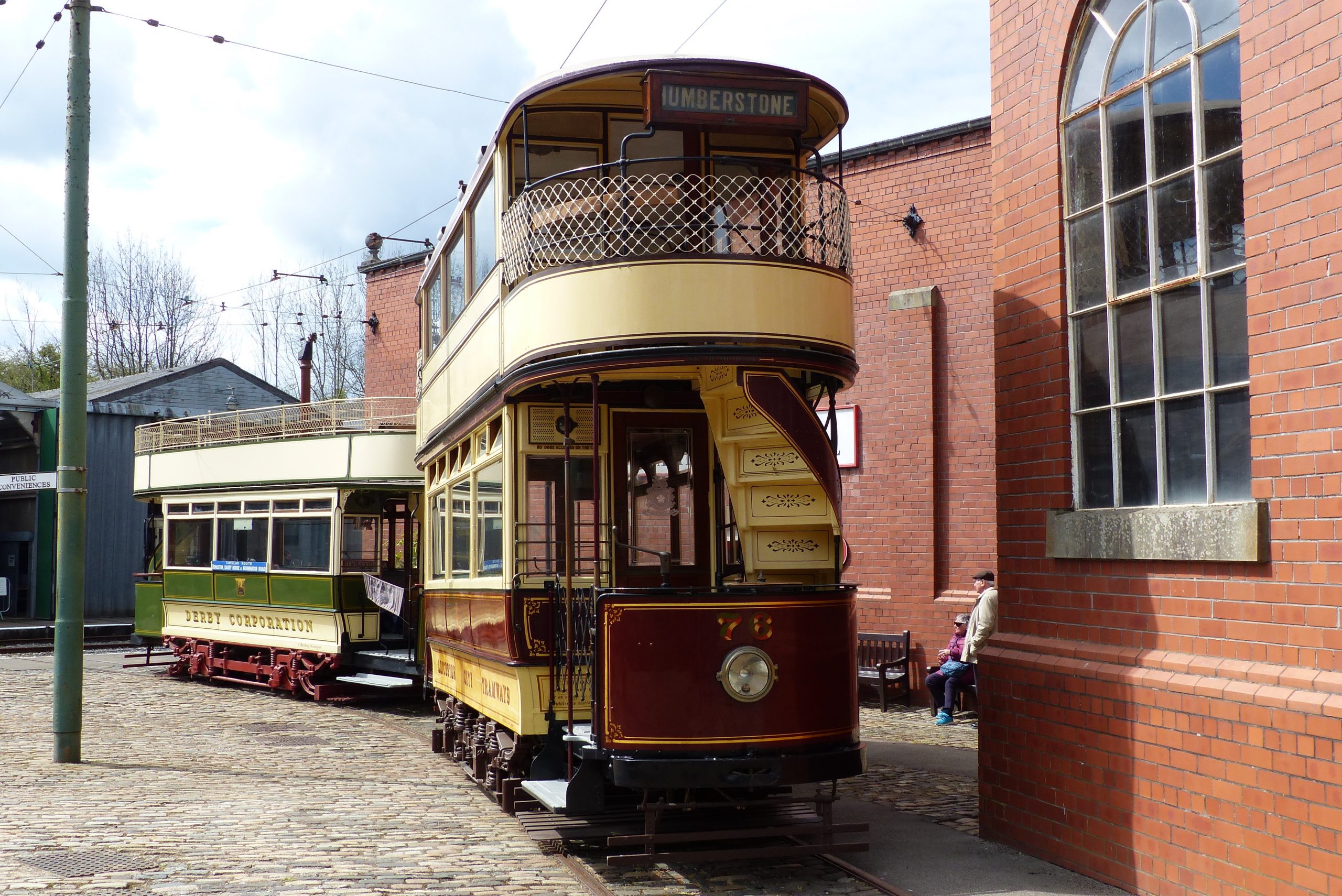Leicester Corporation No. 76
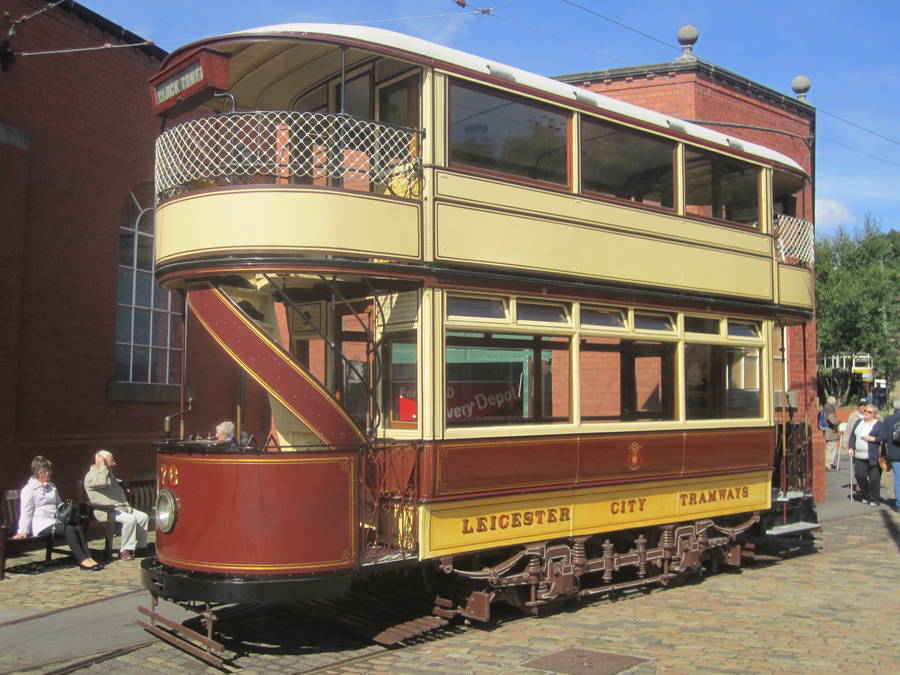
Photo: Jim Dignan
Leicester had a compact, medium-sized tramway and was renowned for having one of the most complicated tramway junctions in the country. Centred on the area surrounding the Haymarket Memorial Clock Tower, no fewer than six roads converged at this point, posing a serious challenge for the tramway engineers who were responsible for laying the tramlines in 1903. The tramway itself was well-patronised, however, and in 1919, its peak year, 62.4 million passengers were carried on 160 tramcars.
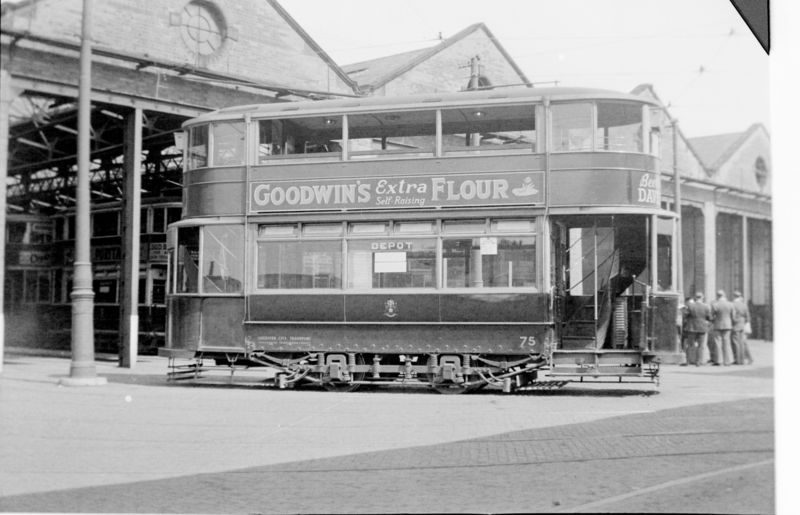
Sister car 75, Abbey Park Road depot. R.B. Parr, 18/8/1946
Leicester 76 was originally built in 1904 as an open-topped tram by the Preston-based Electric Railway and Carriage Company. An interesting safety feature on this type of tramcar was the use of a “reversed” staircase in place of the ordinary outward facing type. The problem with these was that as the tramcar moved off anyone climbing the stairs would be at risk of falling off backwards – and possibly into the road – unless they had a firm grasp of the hand-rail. With a reversed staircase a passenger would be more likely to fall against the stairs themselves or the guard rail that would be positioned behind them.
The perennial problem facing early tram operators of lost revenue during adverse weather conditions was addressed in Leicester’s case by enclosing the upper saloon with a domed roof. A programme to modify the entire fleet in this way commenced in 1913, though balconies were still open at this stage. Further upgrading took place during the 1930s when the open platforms and balconies were fully enclosed.
Specification
- Type of tram
- Electric 4-wheel passenger tram – double deck with open balconies
- Livery
- Maroon and cream
- Seating capacity
- 56 (34 on top deck; 22 downstairs)
- Date built
- 1904
- Date entered service
- 1904
- Manufacturer of body
- Electric Railway and Carriage Co
- Manufacturer of truck
- Brush AA off Glasgow 1017
- Gauge
- 4’ 8½”
- Motor
- BTH GE58 2x30hp
- Controller
- DK DB1 Form B (obtained from Cardiff 131; should be DK DB1)
- Current collector
- Trolley
- Modification
Top cover attached some time after 1913 and fully enclosed in 1929
- Withdrawn from service
1947 (July)
- Subsequent history
Body sold (minus controllers and truck) to become a cricket pavilion and changing rooms in East Cowick, near Snaith, Yorkshire.
- Restoration history
Retrieved and brought to Crich in August 1960 and restored to 1920s condition in 1969.
- Current status
- Restored (though no longer in operational condition) and on display
- Date started operating at Crich
- 1973. Has operated in 3 seasons, most recently in 1975.
- Total mileage covered at Crich
- 658
- Current location
- Exhibition Hall
- 1904 – 1947Operational on original tramway
- 1947 – 1960Body sold and converted to cricket pavilion
- 1960 – 1969In storage
- 1969 – 1973Undergoing restoration
- 1973 – 1975Operational at Crich
- 1975 –On display

